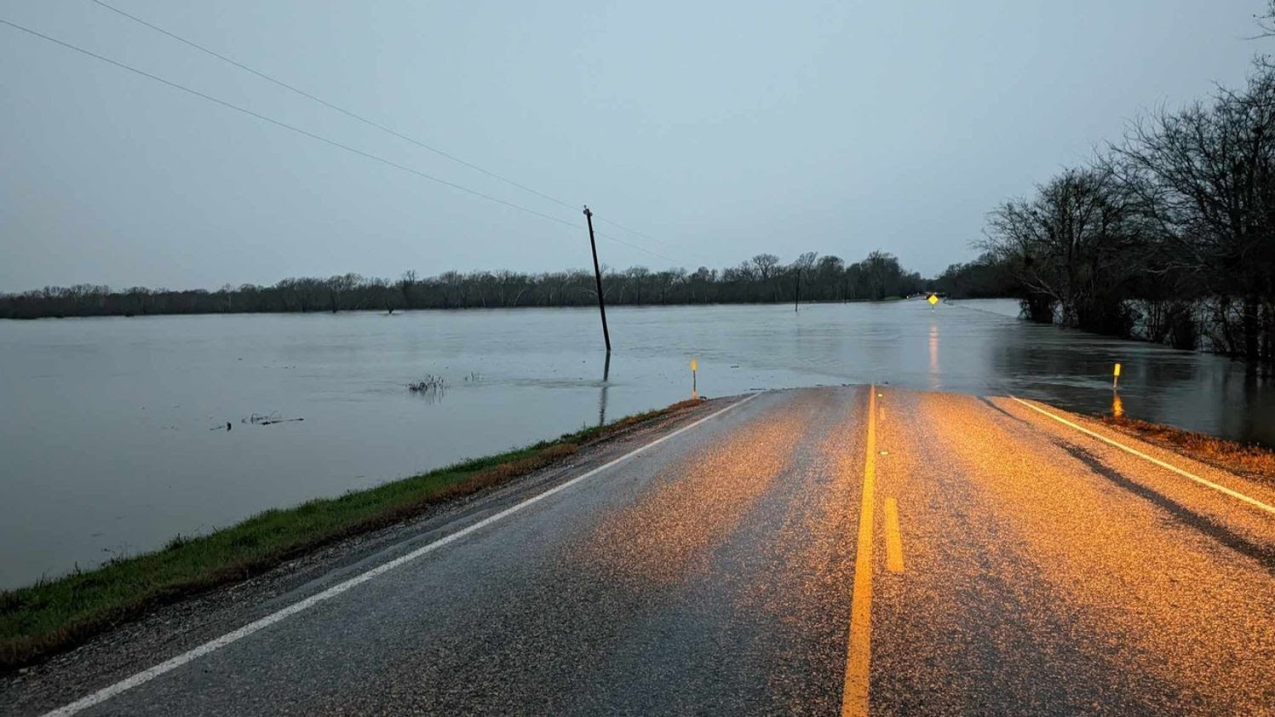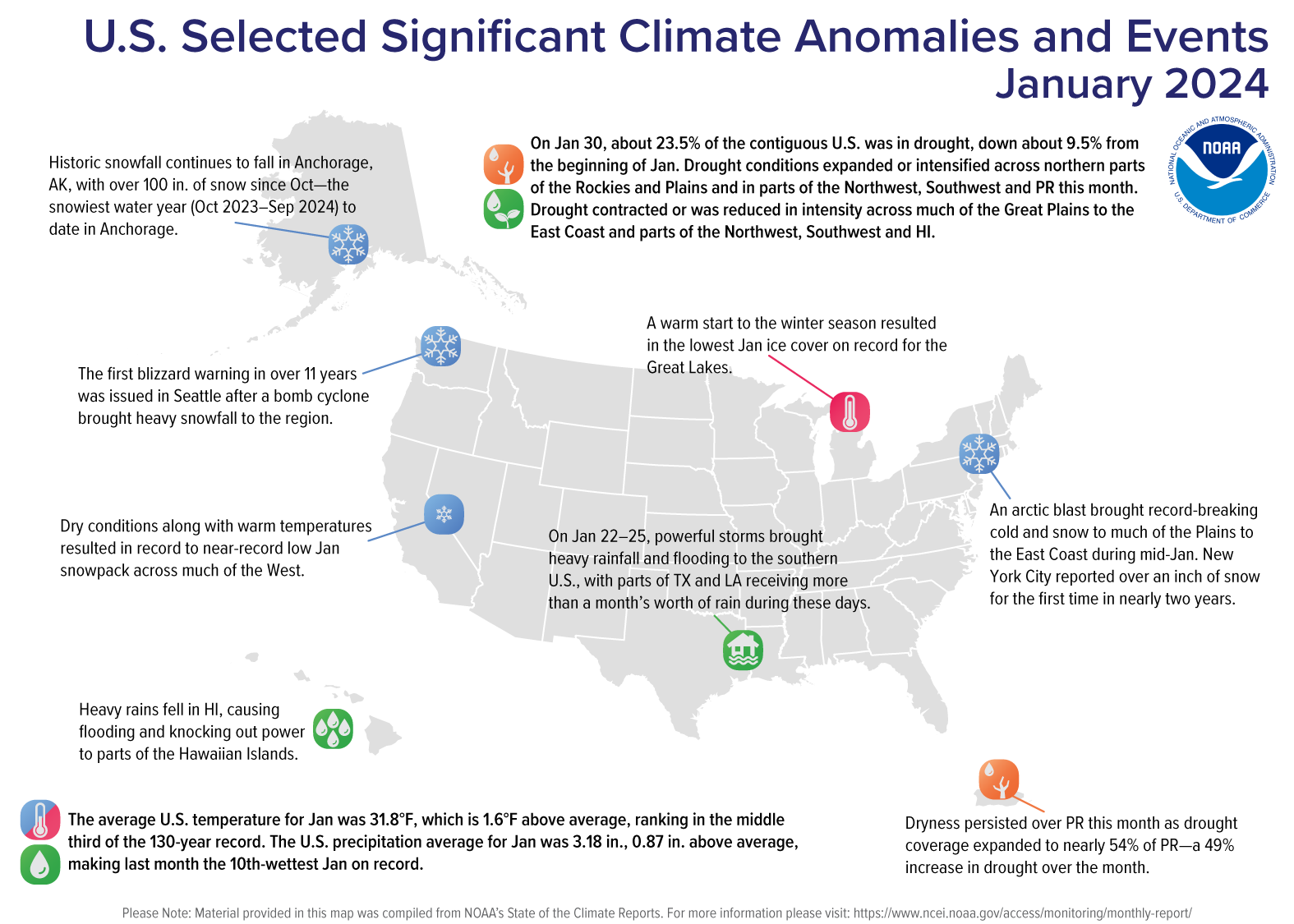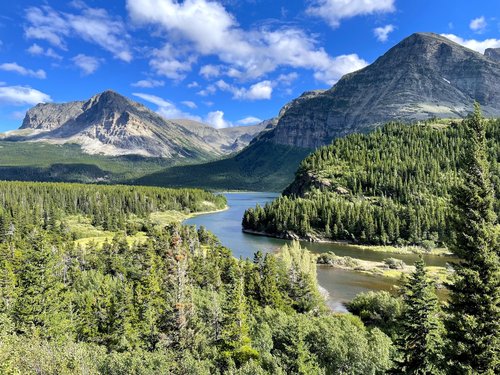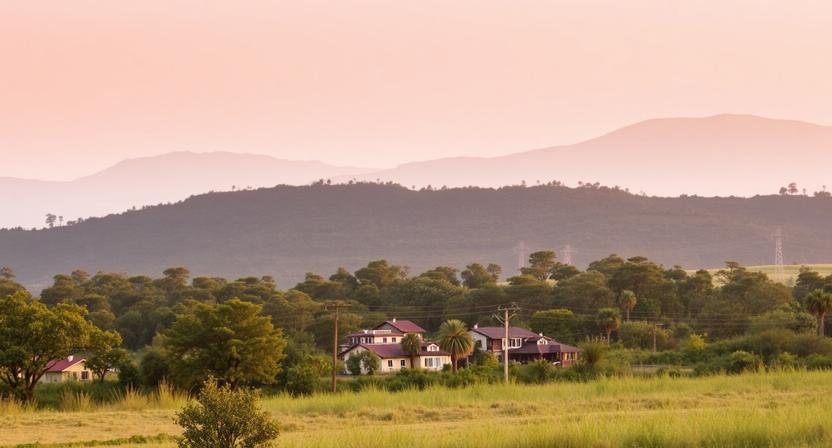The nation just saw its 10th-wettest January on record
Extraordinary rainfall, flooding struck parts of the South

The new year started off unusually wet across the U.S., with extreme rainfall and flooding impacting parts of the southern Plains.
The heavy rain also helped boost the month into the top-10 wettest Januarys on record, according to experts and data from NOAA’s National Centers for Environmental Information (NCEI).
Below are highlights from NOAA’s U.S. climate report for January 2024:
Climate by the numbers
January 2024
The nation’s average precipitation across the contiguous U.S. was 3.18 inches (0.87 of an inch above average), ranking as the 10th-wettest January in NOAA’s 130-year U.S. climate record.
Precipitation was above average across much of the Eastern U.S. and in parts of the West. Massachusetts and Connecticut each saw their third-wettest January, with 11 other states experiencing their top-10 wettest Januarys. Meanwhile, North Dakota had its 10th-driest January on record.
The average January temperature across the contiguous U.S. was 31.8 degrees F (1.6 degrees above average), ranking in the middle third of the climate record.
January temperatures were warmer than average from coastal Carolina to the Northeast, and across parts of the West Coast, central Rockies, Upper Midwest and Great Lakes, with below-normal temperatures extending from parts of the Northwest to the Gulf of Mexico. The only state to see a top-10 warmest or coldest January was Wisconsin, which had its 10th-warmest January on record.

Other notable climate events
- Record rainfall and flooding hit the southern Plains: From January 22–25, heavy rainfall brought more than a month’s worth of rain and life-threatening flooding to parts of Texas and Louisiana. By the morning of January 25, more than 12 inches of rain fell on Brenham, Texas, while other cities in eastern Texas reported rainfall ranging from four to 11 inches. Simmesport, Louisiana, received more than eight inches of rain during this period, while Baton Rouge and New Orleans received more than two inches of rain on January 24 alone.
- An Arctic air mass brought record-breaking temperatures and snow:
- A total of 1,125 U.S. counties broke nearly 2,500 daily minimum temperature records from January 14-18.
- Heavy snow fell over much of the Northeast. On January 16, New York City reported over an inch of snow for the first time in nearly two years. Nashville, Tennessee, received over six inches of snow on January 15 — more than an entire winter’s worth of snow for the city.
- Drought conditions improved: According to the January 30 U.S. Drought Monitor report offsite link, about 23.5% of the contiguous U.S. was in drought, down approximately 9.5% from the beginning of January. Drought conditions expanded or intensified across northern parts of the Rockies and Plains and in parts of the Northwest, Southwest and Puerto Rico. Drought contracted or lessened in intensity across much of the Great Plains to the East Coast, and parts of the Northwest, Southwest and Hawaii.
What is Your Reaction?
 Like
0
Like
0
 Dislike
0
Dislike
0
 Love
1
Love
1
 Funny
0
Funny
0
 Angry
0
Angry
0
 Sad
0
Sad
0
 Wow
0
Wow
0















































/environment-climate-change-and-health-(ech)/water-sanitation-hygiene-and-health-(wsh)/landfill-tuvalu-36092.tmb-1200v.jpg?sfvrsn=5c21fe40_1#)


.jpg.webp?itok=0ZsAnae9#)


























